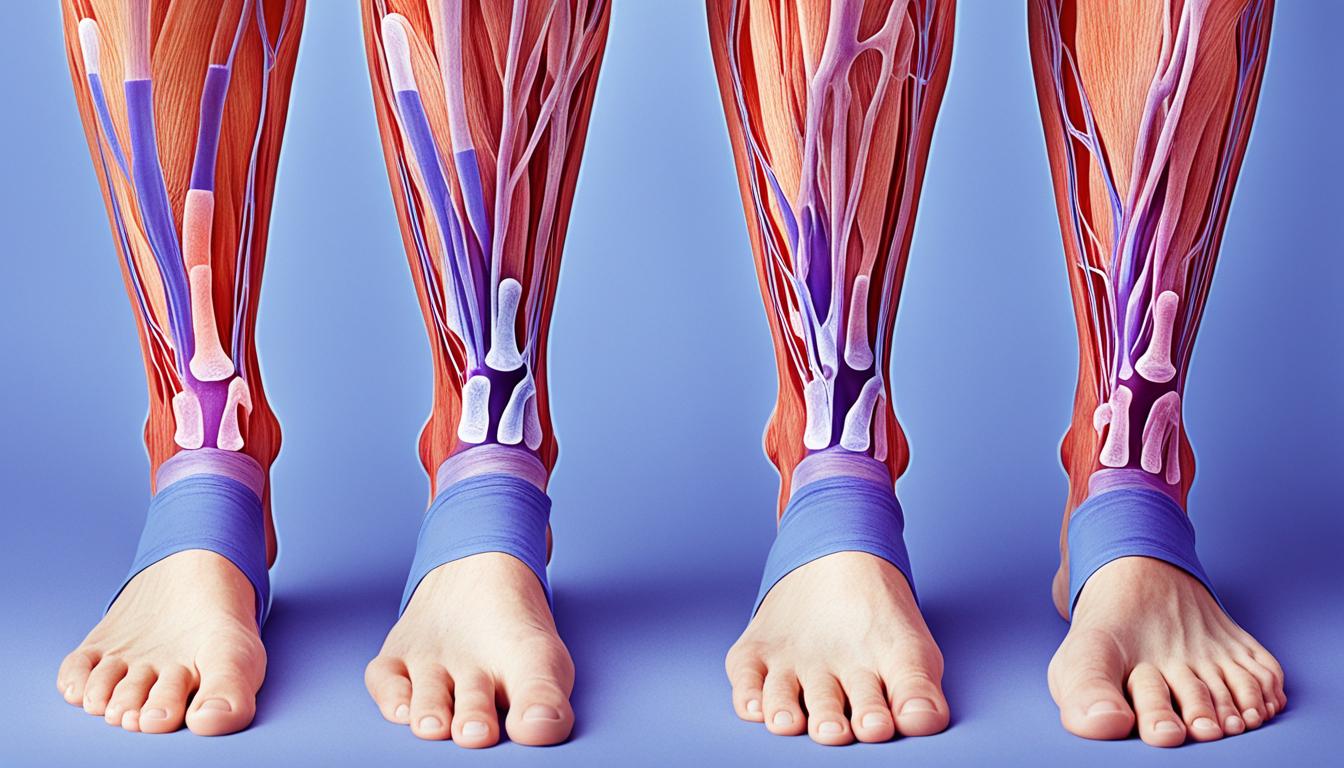Peroneal muscular atrophy is also called Charcot-Marie-Tooth disease (CMT). It’s a hereditary condition that affects the nerves in your legs, hands, and feet. People with this condition may have weak muscles, muscle wasting, and loss of feeling due to nerve problems. These issues come from changes in genes that affect how nerves work, messing up the brain’s messages to the muscles.
Symptoms often start when someone is a child or teenager. They get worse over time. This disease can make it hard to walk, cause your feet to drop, and weaken your legs. Over time, it might even affect your arms.
Doctors diagnose peroneal muscular atrophy through a few tests, like checking your nerves and genes. They want to make sure it’s CMT and rule out other possible causes of nerve problems.
Right now, there’s no cure. Treatment helps keep your muscles strong and your body moving. This might include physical therapy to make your muscles stronger or surgery to fix foot problems.
Some exciting studies suggest that stem cell therapy could be helpful. This treatment involves using your own bone marrow stem cells to help your nerves heal. It might make you feel and move better if you have peroneal muscular atrophy.
Key Takeaways:
- Peroneal muscular atrophy, also known as Charcot-Marie-Tooth disease, is a hereditary peripheral neuropathy that affects the peripheral nerves in the legs, hands, and feet.
- Muscle weakness, atrophy, and sensory loss are characteristic symptoms of this genetic disorder.
- Diagnosis involves a comprehensive evaluation, including clinical examination, electrophysiological studies, genetic testing, and nerve biopsy.
- Management primarily includes physical therapy, orthotic devices, and surgical correction in severe cases.
- Stem cell therapy shows promise in promoting nervous system regeneration and improving motor power and sensation in patients with peroneal muscular atrophy.
Understanding Charcot-Marie-Tooth Disease
Charcot-Marie-Tooth (CMT) disease is the top genetic peripheral neuropathy. It mostly affects motor and sensory functions because of issues in the Schwann cells and axons.
This illness shows up as weak, smaller muscles and lowers your reflexes. It first impacts the feet and then moves up the body. Over time, it also affects how you feel things, like losing your sense of position or vibrations.
There are different types of Charcot-Marie-Tooth, all messing up how nerves work. The main troubles are either the protective cover outside the nerve or the nerve itself getting damaged.
Right now, there’s no way to fix Charcot-Marie-Tooth. But we can help with the symptoms to make life better. Things like exercises and supports for your body help keep your muscles and bones strong.
Sometimes, surgeries are needed to fix how the feet are shaped because of this disease.
Let’s take a closer look at some key clinical features associated with Charcot-Marie-Tooth disease:
1. Distal Symmetrical Weakness
A big sign of Charcot-Marie-Tooth disease is slowly getting weaker in your legs and feet. This can spread to other parts of the body too.
2. Foot Drop
Foot drop is common among those with this disease. It means you can’t lift the front of your foot, which causes you to walk strangely.
3. Progressive Course
This disease gets worse over time for everyone. Some get weaker quickly, while others go slowly. It depends on the person.
4. Rehabilitation Strategies
Rehab is key for Charcot-Marie-Tooth. Exercises and physical therapy can keep your muscles and balance strong. Using special supports helps you walk better.
5. Surgical Correction
If your feet become very deformed and it’s hard to walk, surgery might help. It aims to fix your foot shape, making life easier.
Healthcare workers learn a lot about Charcot-Marie-Tooth to help those living with it. They use many ways to make life better.
Charcot-Marie-Tooth Disease Subtypes and Genetic Mutations
| Subtype | Genetic Mutation(s) |
|---|---|
| CMT1 (AD) | PMP22, GJB1, MPZ |
| CMT1 (AR) | LITAF, MTMR2 |
| CMT2 (AD) | MFN2, NEFL, DNM2 |
| CMT2 (AR) | GDAP1, HSPB1 |
| CMT4 | SH3TC2, PRX, EGR2, GJB1, MTMR2 |
Knowing the exact type and cause of Charcot-Marie-Tooth helps doctors plan the best ways to manage it.
The Potential of Stem Cell Therapy in Charcot-Marie-Tooth Disease
Recent studies bring hope for stem cell therapy in Charcot-Marie-Tooth disease (CMT), a hereditary disorder affecting nerves. A clinical case pointed to success with the Regentime procedure. This method uses a patient’s own bone marrow stem cells for treatment.
The Regentime procedure is showing exciting results. It uses stem cells from the patient’s bone marrow. These cells are then given back to the patient. This approach improved movement, feeling, and walking in patients with CMT.
These positive outcomes indicate that using a patient’s own stem cells might help in CMT. Yet, more studies and tests are essential to check if this therapy is safe and effective. If it’s proven to work, this treatment could change how we handle CMT. It could offer new hope for patients to improve their daily lives.

